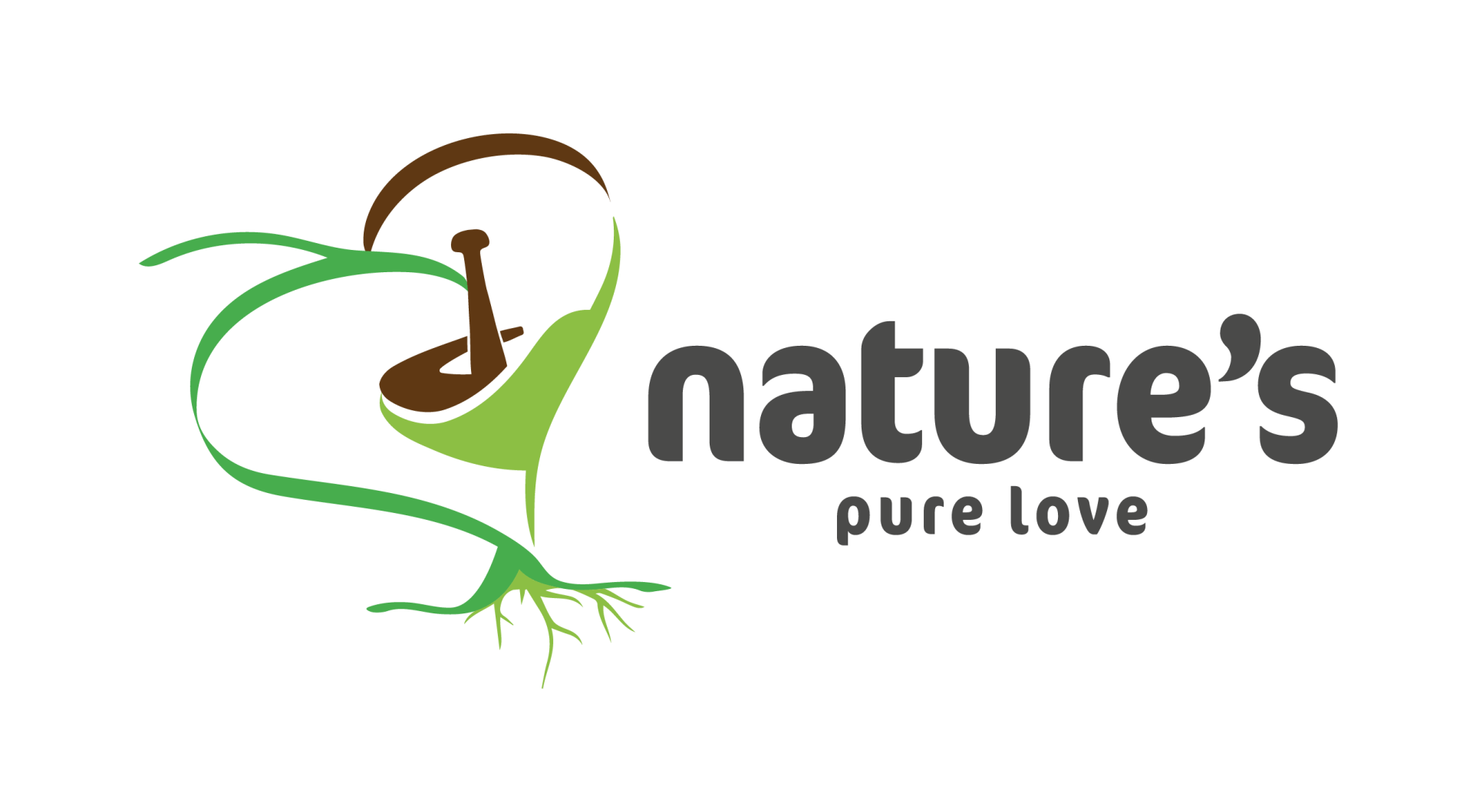What is Invisible Illness?
What is Invisible Illness? A Comprehensive Examination of Unseen Chronic Conditions
Introduction
Not all chronic health conditions can be seen with the naked eye. For many individuals, illness is an ongoing battle that remains invisible to others. These unseen conditions, often referred to as
invisible illnesses, profoundly affect quality of life despite the lack of outward physical signs.
Unlike visible disabilities, which tend to elicit immediate recognition or understanding, invisible illnesses present unique challenges that shape daily experiences in ways society often overlooks.
This article explores the scope, definitions, prevalence, and lived experiences of invisible illnesses. It also examines their diagnostic challenges, workplace barriers, and the need for cultural and policy shifts that better support those living with them.

Defining the Unseen: Scope, Definitions, and Prevalence
The Invisible Epidemic: Context and Scale
An invisible illness can be broadly defined as a long-term or chronic medical condition that does not display obvious physical signs to others. While its effects can be life-altering—impacting energy, mobility, cognition, or mood—the absence of visible markers such as mobility aids, medical devices, or external injuries means the condition often goes unnoticed by the casual observer.
This lack of visible evidence shapes the lived experience in profound ways. The individual must often navigate environments and social interactions without the automatic understanding extended to those with visible conditions. In many cases, they must repeatedly explain or justify their needs in order to receive recognition or support.
Statistics demonstrate just how widespread invisible conditions are.
The World Health Organization estimates that
1.3 billion people globally live with significant disabilities, roughly
1 in 6 people worldwide. In the United States, approximately
96% of individuals with chronic medical conditions show no outward signs of illness, and about 10% of the total population experiences invisible conditions severe enough to significantly limit daily life. In the United Kingdom, more than
20% of the population is disabled, and an estimated
70–80% of these disabilities are invisible.
These figures highlight what researchers call the
“Inversion of Perception.” Although most chronic suffering is invisible, public awareness, policy, and infrastructure tend to focus on visible disabilities. Accessibility measures such as ramps, lifts, or disabled parking are crucial, but they primarily serve those with physical signs of disability.
Meanwhile, the far larger population with invisible conditions often remains unsupported. Underlying this neglect is a cultural assumption: that illness must be
seen to be
believed.
Deconstructing the Terminology: Illness versus Disability
To understand the systemic challenges, it is important to distinguish between invisible illness and invisible disability.
- An invisible illness is any chronic health condition not immediately apparent to others. This could include autoimmune disorders, fatigue syndromes, neurological conditions, or mental health disorders.
- An
invisible disability occurs when that illness causes significant functional limitations, interfering with movement, sensory processing, work, education, or daily activities.
This distinction is more than just semantics—it shapes legal and social outcomes. For example, in the United States, protections under the Americans with Disabilities Act (ADA) apply only when a condition demonstrably limits “major life activities.” A diagnosis alone is not enough. Individuals must prove functional impairment to qualify for workplace accommodations or legal protections.
This creates what can be described as the
“Disability Threshold Challenge.” Unlike a visible disability (e.g., a broken leg in a cast), which requires little explanation, invisible conditions often demand extensive proof. Individuals must rely on self-reporting—descriptions of pain, fatigue, brain fog, or sensory overload—rather than objective evidence. Because these symptoms cannot always be measured with tests or scans, the burden of proof is disproportionately high.
This skepticism extends beyond bureaucratic systems. Patients may face disbelief from employers, colleagues, or even family, who question whether their symptoms are “real.” As a result, those with invisible illnesses must navigate not only the condition itself but also the ongoing task of legitimising their experience in order to receive the support they need.
Physical and Autoimmune Disorders
Autoimmune and inflammatory conditions represent a major category of invisible illnesses. These occur when the immune system mistakenly attacks healthy tissues, causing internal damage without outward signs. Individuals may experience debilitating fatigue, pain, or organ complications while appearing physically well.
Examples include:
- Lupus – a systemic condition where the immune system attacks cells throughout the body, leading to inflammation, fatigue, and pain.
- Rheumatoid Arthritis (RA) – often beginning in smaller joints, RA may cause stiffness and pain without visible swelling in its early or managed stages.
- Crohn’s disease – a type of inflammatory bowel disease that damages the digestive tract, resulting in pain, nutritional challenges, and fatigue.
- Coeliac disease – a condition where gluten triggers immune damage to the small intestine, affecting nutrient absorption and overall health.
Though symptoms can be severe, their internal nature means that many people underestimate or overlook the struggles of those affected.
Chronic Pain and Fatigue Syndromes
Conditions in this category are defined largely by subjective experiences of pain, exhaustion, or cognitive fog. Because these symptoms often lack standardised biological markers, they can be particularly difficult to diagnose.
- Fibromyalgia causes widespread, long-term pain accompanied by fatigue, poor sleep, and concentration issues.
- Chronic Fatigue Syndrome (CFS/ME) leads to profound exhaustion that is not relieved by rest, and can severely affect physical and mental functioning.
Both conditions are frequently misunderstood or dismissed, as the absence of visible indicators makes it harder for others to grasp their seriousness.
Neurological and Cognitive Conditions
Neurological and cognitive challenges are another form of invisible illness, affecting memory, focus, communication, and behaviour. Outward appearance often remains unchanged, leading to misjudgement by others.
Examples include:
- ADHD – marked by difficulties with attention, hyperactivity, and impulsivity, often continuing into adulthood.
- Autism Spectrum Disorder (ASD) – influencing communication, learning, and social interaction in diverse ways.
- Traumatic Brain Injury (TBI) – resulting in lasting cognitive or behavioural changes, even when no physical signs remain.
- Dementia and Alzheimer’s disease – conditions that gradually impair memory, decision-making, and personality, while physical appearance stays the same.
Because these conditions alter internal brain function rather than external appearance, they are frequently misunderstood or underestimated.
Mental Health and Psychological Disorders
Mental health conditions are often invisible but profoundly shape an individual’s thoughts, emotions, and behaviours. They include:
- Depression – characterised by persistent low mood, hopelessness, and fatigue.
- Anxiety disorders – ranging from generalised anxiety to panic disorder and obsessive-compulsive disorder (OCD).
- Post-traumatic stress disorder (PTSD) – involving flashbacks, nightmares, and heightened vigilance following trauma.
- Borderline Personality Disorder (BPD) – marked by difficulty managing emotions, relationships, and self-image.
Crucially, mental and physical health often overlap. For example, conditions such as multiple sclerosis or chronic inflammation may biologically trigger depression or anxiety, creating a cycle of interconnected challenges. Addressing invisible illness, therefore, requires acknowledging both physical and psychological dimensions together.
The Clinical Gauntlet: Diagnosis and Dismissal
For those with invisible illnesses, navigating healthcare often proves just as challenging as living with the condition itself. Securing an accurate diagnosis is rarely straightforward, and the process can bring added frustration, uncertainty, and even emotional trauma.
Diagnostic Delay and Ambiguity
Invisible illnesses are notoriously difficult to diagnose because their symptoms often lack measurable clinical markers. Complaints such as chronic pain, fatigue, or cognitive fog are significant but rarely appear on standard tests or scans. As a result, healthcare providers must piece together patterns from patient reports while ruling out other conditions.
For example, illnesses like fibromyalgia and chronic fatigue syndrome are defined largely by subjective symptoms rather than visible signs. Without physical indicators such as swelling or rashes, patients may endure years of medical appointments and referrals before reaching a definitive diagnosis.
These delays can have serious consequences. Many chronic illnesses benefit from early recognition and proactive management. When diagnosis is postponed, opportunities for timely intervention are missed, increasing the likelihood of complications and diminished quality of life.
The Trauma of Medical Gaslighting
An even more damaging barrier is the phenomenon of medical gaslighting. This occurs when healthcare providers dismiss or minimise patient experiences, attributing reported symptoms to stress, anxiety, or psychological factors rather than considering physical causes.
This dismissal is often shaped by broader biases within medicine. Research highlights that women’s symptoms are disproportionately overlooked, especially in conditions like autoimmune disorders, cardiovascular issues, and ADHD. Historically, much of medical research was centred on men, leaving gaps in understanding how illnesses present in women. Likewise, racial disparities persist, with Black patients less likely to have their pain acknowledged or treated adequately.
The result is a vicious cycle of invisibility and bias:
- Because the condition lacks outward markers, diagnosis is delayed.
- Delays fuel scepticism, leading to further dismissal.
- Repeated invalidation erodes trust in healthcare and intensifies psychological distress.
For many, this cycle transforms the healthcare system itself into a source of trauma. Medical gaslighting does more than delay care—it undermines confidence, isolates patients, and compounds the suffering of those already struggling with an unseen burden.

The Lived Experience: Stigma, Isolation, and the “Mask”
Living with an invisible illness creates challenges that extend far beyond physical symptoms. Because the condition cannot be seen, individuals often face doubt, scepticism, and a lack of understanding from society. This gap between inner reality and outer appearance forces many into coping strategies that may ease social pressure but increase emotional strain.
The Invalidation of the Unseen and Societal Scepticism
One of the most difficult aspects of invisible illness is the constant need to explain or justify one’s condition. Unlike visible disabilities, which typically elicit immediate recognition or empathy, invisible conditions often provoke doubt. Many people with these illnesses hear dismissive phrases such as,
“But you don’t look sick.”
This lack of visible evidence undermines legitimacy. Individuals with conditions such as fibromyalgia or chronic fatigue syndrome may experience profound pain and exhaustion, yet struggle to convince others that their difficulties are real. This ongoing invalidation not only makes practical support harder to secure but also contributes to deep feelings of frustration and isolation.
The Emotional Cost of Masking and Withdrawal
To protect themselves from scepticism or judgement, many people with invisible illnesses resort to
masking—hiding or minimising their symptoms in order to appear “healthy” in social or professional settings. This performance of normalcy is exhausting, requiring significant emotional and physical energy.
Over time, masking often leads to withdrawal. The effort to sustain an image of wellness can feel unsustainable, pushing individuals to step back from relationships, social events, or even professional opportunities. Ironically, the very strategy intended to reduce stigma can intensify loneliness, creating a cycle of disconnection and isolation.
The Workplace Disclosure Dilemma
Employment settings introduce a unique challenge: deciding whether to disclose an invisible illness. On one hand, disclosure may be necessary to access workplace adjustments such as flexible hours or reduced workload. On the other, it carries risks of stigma, career damage, or accusations of exaggeration.
Many professionals fear that disclosure will mark them as unreliable or less capable. For example, some report being accused of using their condition as an excuse for reduced performance or additional time off. Others, fearing discrimination, choose silence—opting to struggle privately rather than risk losing career opportunities or financial stability.
This disclosure dilemma leaves many in a state of constant tension: balancing the need for support with the fear of negative professional consequences. In some cases, the pressure leads individuals to extreme self-isolation, avoiding social and work environments altogether.

Policy, Work, and the Fight for Accommodation
While personal resilience and community understanding play a role in supporting those with invisible illnesses, meaningful change requires systemic and structural reform. Policies, workplace practices, and legal protections must evolve to address the unique needs of people whose conditions are not outwardly visible.
Barriers to Workplace Inclusion and Accommodation Gaps
One of the greatest challenges in employment is the lack of recognition for invisible needs. Employees with conditions such as chronic fatigue, autoimmune disorders, or cognitive impairments often face hurdles when requesting support like flexible hours, ergonomic adjustments, or reduced sensory environments.
Unlike requests related to visible disabilities, which are typically understood and accommodated, requests linked to invisible conditions may be met with doubt. Many workplaces lack formal policies outlining procedures for such accommodations, leaving employees to navigate inconsistent or unclear systems. This ambiguity creates unnecessary stress and increases the likelihood of discrimination.
Although many managers acknowledge the importance of inclusion, gaps in training and structured policy often mean these principles are not effectively put into practice. Without clear guidelines, support is left to the discretion of individual supervisors, creating unequal experiences across workplaces.
Legal Frameworks: The ADA and Threats to Lifelines
In the United States, the Americans with Disabilities Act (ADA) provides critical protection by mandating accessibility and prohibiting discrimination. Enacted in 1990, it reshaped public life, ensuring legal rights for disabled individuals and prompting infrastructure changes such as ramps, signage, and accessible transport.
However, legal protections are only effective if supported by sustainable resources. Many people with disabilities, including those with invisible conditions, rely on programmes such as Medicaid not just for healthcare but also for essential community-based services. These services include in-home support, employment training, and assistance that enables independent living.
Cuts to Medicaid funding or stricter work requirements risk destabilising these lifelines. Since invisible illnesses typically require long-term management rather than short-term interventions, policy erosion disproportionately affects this group. Without robust community-based services, individuals may be forced into institutional care, reversing decades of progress in disability rights and inclusion.
Implementing True Inclusivity: Best Practices for Employers
Legal compliance is an important baseline, but true inclusion requires cultural and procedural changes that normalise support for invisible conditions. Employers can take practical steps to reduce barriers:
- Communication Support: Provide meeting agendas in advance, allow extra time for responses, and use clear written instructions to accommodate those with memory or processing challenges.
- Cognitive and Sensory Support: Reduce background noise, provide captioned materials, and offer assistive technologies for employees with hearing, focus, or comprehension difficulties.
- Flexibility and Physical Support: Offer options for remote work or flexible scheduling to accommodate fluctuating symptoms. Ensure the physical environment (lighting, seating, floor surfaces) can be adjusted to meet diverse needs.
Inclusive language also matters. Avoiding terms such as “normal” when describing employees without disabilities helps foster belonging for those with unseen challenges.
When supported by consistent diversity training and clear disclosure guidelines, these steps not only improve wellbeing but also unlock the potential of employees with invisible conditions, ensuring that talent and contribution are not lost due to avoidable barriers.
Empowering Self-Advocacy and Systemic Change
For those living with invisible illnesses, meaningful progress comes from both individual empowerment and collective reform. While systemic barriers remain significant, strategies for self-advocacy, community support, and cultural change offer pathways toward better recognition and inclusion.
Strategies for Self-Advocacy in Clinical Settings
The experience of dismissal or misdiagnosis in healthcare can be discouraging, but patients can equip themselves with practical tools to strengthen their voice in clinical encounters. Key strategies include:
- Documenting symptoms in detail, noting frequency, intensity, and impact on daily life.
- Preparing thoroughly for appointments by outlining questions and goals in advance.
- Bringing a support person to consultations, both for emotional reinforcement and to act as a second set of ears.
- Seeking second or third opinions if initial doctors remain dismissive.
- Requesting written documentation when concerns are minimised, creating accountability within the system.
Importantly, patients are encouraged to trust their own experiences. Symptoms are real even when tests do not capture them, and persistence is often necessary to secure proper care. Therapy or counselling can also help process the emotional toll of repeated invalidation and rebuild confidence in self-advocacy.
The Power of Community and Advocacy Groups
The isolation of invisible illness is best countered by connection. Patient advocacy organisations provide safe spaces where individuals can share experiences, access reliable information, and learn strategies for navigating healthcare and employment.
Groups such as the Invisible Disability Project actively challenge the stigma associated with unseen conditions. By fostering open dialogue and collective identity, these organisations transform individual struggles into broader movements for recognition and change. They also offer educational resources to the public, bridging the gap between hidden realities and societal awareness.
The Future of Visibility: Embracing Diversity
Ultimately, progress lies not only in accommodations but in a cultural redefinition of difference. Advocates increasingly emphasise concepts such as
bodily diversity and
neurodiversity, rejecting narrow binaries of “normal” versus “abnormal.” This reframing positions invisible conditions as natural variations within human experience rather than as personal deficiencies.
Shifting attitudes requires sustained efforts to:
- Challenge stigma and shame by promoting visibility and authenticity.
- Update legal and bureaucratic systems to reflect the realities of invisible conditions.
- Normalise diverse expressions of health, ability, and identity in media, workplaces, and communities.
Through this lens, invisible illness becomes not just a matter of survival but part of a broader recognition of human diversity. Acceptance and advocacy, combined with practical reforms, can transform lives while fostering a more inclusive society.
Conclusion and Recommendations
Invisible illnesses are not rare or exceptional—they represent the lived reality of millions across the globe. Yet the greatest challenge lies not in the illnesses themselves, but in society’s inability to recognise and validate suffering that is not outwardly visible.
The cultural focus on visible disability has created an “Inversion of Perception”: the majority of chronic health challenges remain unseen, yet resources, policies, and empathy continue to be disproportionately directed at conditions with outward signs. This misalignment results in systemic neglect across healthcare, workplaces, and wider society.
Clinically, the lack of visible markers makes diagnosis slow and uncertain. Combined with gender and racial biases, this often leads to medical gaslighting, where patients are dismissed or blamed for their own symptoms. This erodes trust and amplifies psychological distress.
Socially, those with invisible illnesses frequently resort to masking their struggles in order to appear “normal.” While this may shield them from immediate judgement, it often leads to exhaustion, isolation, and mental health decline. Professionally, the disclosure dilemma forces individuals to weigh the risk of discrimination against the need for workplace adjustments, often leaving them unsupported.
Politically, people with invisible illnesses are highly vulnerable to policy erosion. Their conditions typically require long-term management and community-based support, making funding cuts to essential services especially damaging. Without strong protections, independence and inclusion remain at risk.
Recommendations for Change
A comprehensive response requires reform across three key domains:
- Clinical System Reform
- Integrate training on implicit bias and invisible symptom recognition into medical education.
- Encourage clinicians to treat patient testimony as valid evidence, not secondary to test results.
- Equip patients with tools for effective self-advocacy, including documentation, support networks, and access to second opinions.
- Workplace Standardisation
- Move beyond minimal compliance with disability laws by implementing clear disclosure policies and structured processes for accommodation.
- Provide practical adjustments such as flexible schedules, remote work, written communication aids, and sensory-friendly environments.
- Establish diversity training to reduce stigma and ensure inclusion for employees with unseen conditions.
- Cultural Paradigm Shift
- Promote acceptance of
bodily diversity and
neurodiversity as natural aspects of human variation.
- Challenge the stigma of “not looking sick” by fostering awareness campaigns and open dialogue.
- Reframe invisible illness as part of collective identity rather than an individual burden.
Final Reflection
Invisible illnesses demand recognition not only as medical conditions but as social realities. By reforming clinical practices, strengthening workplace inclusion, and reshaping cultural attitudes, we can dismantle the barriers that deny dignity and support to those living with unseen challenges. True progress lies in shifting from a framework of disbelief and dismissal to one of acceptance, equity, and empowerment.
Take Action for Invisible Illness Awareness
Invisible illnesses affect millions, yet too often they remain overlooked. You can help change that. Share this article, start conversations, and challenge the assumption that health challenges must be visible to be valid. Together, we can build a culture that recognises, respects, and supports every individual’s lived experience.
FREQUENTLY ASKED QUESTIONS
1. What is an invisible illness?
An invisible illness is a chronic health condition that doesn’t show visible physical signs but still significantly impacts daily life.
Examples include autoimmune disorders, chronic fatigue syndrome, fibromyalgia, depression, and ADHD.
Despite the lack of outward symptoms, these conditions can cause severe pain, fatigue, or cognitive challenges.
2. How common are invisible illnesses?
Invisible illnesses are far more common than most people realise.
The World Health Organization estimates that over 1.3 billion people globally live with significant disabilities, and studies show that around 96% of individuals with chronic conditions show no visible symptoms.
This means most disabilities are unseen.
3. What are some examples of invisible illnesses?
Common invisible illnesses include:
Autoimmune disorders such as lupus, rheumatoid arthritis, and coeliac disease
Chronic pain and fatigue syndromes like fibromyalgia and CFS/ME
Neurological conditions such as ADHD, autism, and traumatic brain injury
Mental health disorders including anxiety, depression, PTSD, and BPD
4. Why are invisible illnesses often misunderstood or dismissed?
Because they lack visible signs, people with invisible illnesses often face disbelief from others—including healthcare providers, employers, or family members.
This misunderstanding can lead to medical gaslighting, where symptoms are dismissed as psychological or exaggerated, causing emotional distress and delayed diagnosis.
5. How do invisible illnesses affect people at work?
Employees with invisible illnesses may struggle with fluctuating symptoms, fatigue, or concentration issues that affect productivity.
Many hesitate to disclose their condition due to fear of stigma or discrimination.
Inclusive workplace policies, flexible hours, and clear disclosure guidelines are essential for fair treatment and accommodation.











